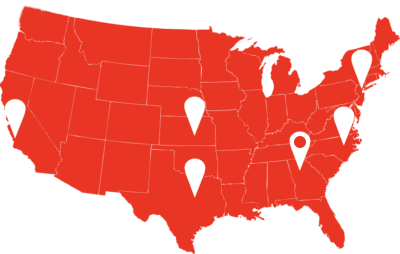Microgrid FAQ
Microgrids are an innovative and flexible solution to our evolving energy needs. As the world becomes more reliant on electricity, microgrids offer a sustainable and reliable way to generate and distribute energy locally.
A microgrid is a localized and independent energy system that can generate, distribute, and manage electrical power within a specific geographic area. It operates either in conjunction with or independently of the main power grid, offering increased resilience, reliability, and flexibility.
Microgrids typically consist of a combination of distributed energy resources (DERs) such as solar panels, wind turbines, batteries, and traditional generators. These components work together to generate and distribute electricity to meet the energy needs of the connected community or facility.
- Resilience: Microgrids enhance energy resilience by providing a localized power source, reducing dependency on the main grid.
- Reliability: Microgrids offer a more stable and reliable power supply, especially in areas prone to grid outages or disruptions.
- Energy Independence: Users can have more control over their energy production and consumption, reducing reliance on external power sources.
- Efficiency: Microgrids can optimize energy usage, reducing waste and improving overall efficiency.
Microgrids can be implemented in various settings, including:
- Remote Areas: Providing power to isolated communities without access to a centralized grid.
- Critical Infrastructure: Ensuring continuous power supply for hospitals, military bases, and emergency services.
- Industrial Facilities: Enhancing energy reliability for manufacturing plants and other large facilities.
- Urban Environments: Improving grid resilience in densely populated areas.
Yes, microgrids can operate independently as standalone systems or in conjunction with the main grid. They can switch between grid-connected and islanded modes based on the specific requirements and conditions.
Microgrids integrate various technologies, including solar panels, wind turbines, batteries, combined heat and power (CHP) systems, and advanced control systems. These technologies work together to balance energy production and consumption.
Microgrids rely on sophisticated control systems that monitor and manage the generation, distribution, and consumption of energy. These control systems use advanced algorithms to optimize the performance of the microgrid components.
Microgrids can be designed to prioritize renewable energy sources, making them environmentally friendly. By integrating solar, wind, and other clean energy technologies, microgrids contribute to reducing greenhouse gas emissions and promoting sustainability.
Challenges may include initial costs, regulatory hurdles, and technical integration. Additionally, ensuring interoperability and standardization of microgrid components can be a consideration.
Yes, microgrids can be scaled to meet the needs of various users, including individual homeowners, small businesses, and communities. They provide a customizable and scalable solution for diverse energy needs.

The New Standard of Energy Security
Efficient, equitable, and working for everyone.
Floating, Watertight Canopy and Roof-Top Solar • Battery Backup • Switchgear • Generators • Monitoring • Maintenance

